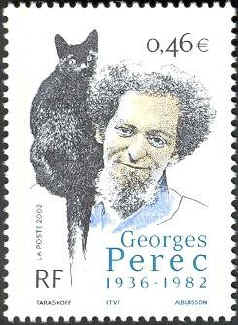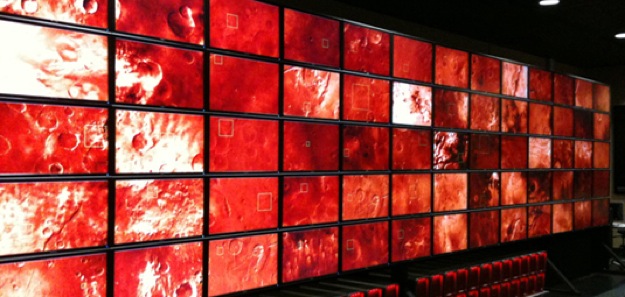 In his “Two Hundred and Forty-three Postcards in Real Colour” (first published in 1978), Georges Perec, a member of the Oulipo group, gave a mere recitation of messages from postcards as a short story. In the introduction of the containing book L’Infra-ordinaire, he reacts against the headlines in newspapers that are always about catastrophies, scandals, depressions and conflicts – anything except for what we encounter in everyday life. Since Perec thought this prevents us from looking at the essence of things and tells us no more than life is going on despite all the terrible things happening far away, he turned to the everyday events that no longer surprise us. The collection of postcards was part of this project. Here are some samples from the 243 postcards:
In his “Two Hundred and Forty-three Postcards in Real Colour” (first published in 1978), Georges Perec, a member of the Oulipo group, gave a mere recitation of messages from postcards as a short story. In the introduction of the containing book L’Infra-ordinaire, he reacts against the headlines in newspapers that are always about catastrophies, scandals, depressions and conflicts – anything except for what we encounter in everyday life. Since Perec thought this prevents us from looking at the essence of things and tells us no more than life is going on despite all the terrible things happening far away, he turned to the everyday events that no longer surprise us. The collection of postcards was part of this project. Here are some samples from the 243 postcards:
We’re camping near Ajaccio. Lovely weather. We eat well. I’ve got sunburnt. Fondest love.
We’re at the Hotel Alcazar. Getting a tan. Really nice! We’ve made loads of friends. Back on the 7th.
We’re sailing off L’Ile-Rousse. Getting ourselves a tan. Food admirable. I’ve gone and got sunburnt! Love etc.
Greetings from Hellenie. Sunning ourselves. Super! We’ve made heaps of friends. Many regards.
Visiting the Channel. Very restful. Lovely beaches. I’ve got sunburnt. Love.
Here we are in Frejus. Doing nothing all day except relax. Really nice. I go aquaplaning. Back as planned.
We’re camping next to Formentera. Weather good. Vast beach. My shoulders are roasted. Fond love to all boys and girls.
This sounds very much like a list of Twitter feeds to me. This is no surprise considering the connections and similarities between postcards, text-messaging and micro-blogging. Twitter’s 140-character limit is based on the 160-character limit in SMS. When trying to find an ideal length for modern short messages Friedhelm Hillebrand made the observation that most postcards have 150 characters or less. However the resemblance is not only in this limitation but also in the type of content.
According to the Twitter Facts & Figures compiled by Website Monitoring Blog earlier this year, the majority of Twitter messages are about the daily life: 27% of the content consists of private conversations, 30% is about user’s current status while current news and links to blog articles only sum up to a 16%. When it comes to the popularity of the content, we have a different picture. Based on the findings of Haewoon Kwak, Changhyun Lee, Hosung Park, and Sue Moon in their 2009 research What is Twitter, a Social Network or a News Media? over 85% of trending topics on Twitter are headline news or persistent news. Although expressions of the daily life don’t individually reach the wide audience that sensation-biased mainstream news reach, the sum of everyday conversations outnumbers any other category. On one hand people no longer have to stick with the mainstream media, on the other hand we see that even the banal is commodified where each instance of a daily conversation has become just another number in the statistical data collected by web companies. Oulipo’s use of constraints to trigger new ideas and inspiration crossed its way with micro-blogging, thanks to a combination of technological limitations (originally the character limit in SMS) and people’s increasing time constraints with decreasing attention spans. It’s interesting to see how artificial constraints used by avant-garde writers turned into a reality in the way we live, followed by technology companies reinventing and popularizing practices based on those constraints.
 In his “Two Hundred and Forty-three Postcards in Real Colour” (first published in 1978),
In his “Two Hundred and Forty-three Postcards in Real Colour” (first published in 1978), 
